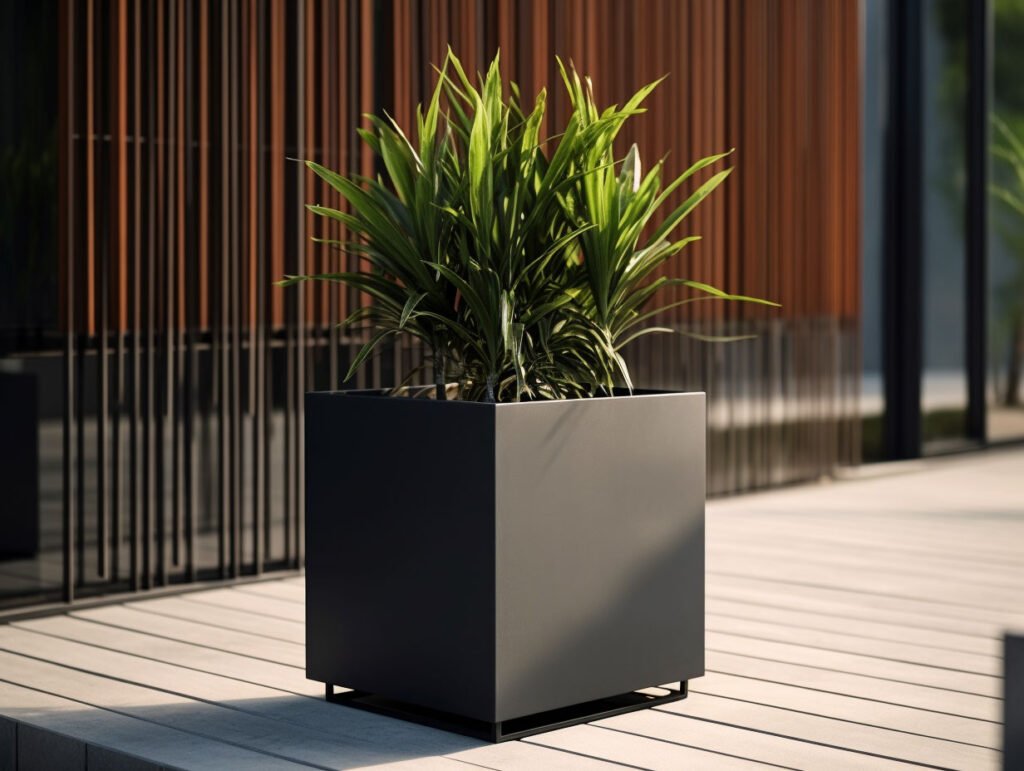In the realm of architecture and design, incorporating greenery and natural elements into spaces has become increasingly important. GRC (Glass Fiber Reinforced Concrete) planters offer a versatile and practical solution for integrating plants and enhancing the aesthetic appeal of various environments. This article aims to highlight the advantages of GRC planters, providing architects and designers with valuable insights for their projects.
Lightweight and Durable
GRC planters are known for their lightweight yet durable nature. The inclusion of glass fibers in the concrete mixture enhances their strength without adding excessive weight. This feature makes GRC planters easier to handle and transport, allowing for flexible placement and reconfiguration. Additionally, their durability ensures longevity and resistance to cracking, chipping, and other forms of damage.

Design Flexibility
Architects and designers value the design flexibility offered by GRC planters. These planters can be molded into various shapes and sizes, allowing for customization and integration into any design concept. Whether it’s sleek and contemporary or rustic and traditional, GRC planters can be tailored to match the overall aesthetic of a space. The versatility extends to texture and finish options, enabling designers to achieve specific looks or mimic natural materials like stone or wood.
Weather Resistance
GRC planters exhibit exceptional resistance to various weather conditions. They can withstand extreme temperatures, freeze-thaw cycles, and exposure to sunlight without compromising their structural integrity. This weather resistance makes GRC planters suitable for both indoor and outdoor applications, eliminating concerns about deterioration or discoloration over time.

Moisture Management
Proper moisture management is critical for the health and longevity of plants. GRC planters provide excellent moisture regulation due to their inherent porous nature. The planters allow for proper drainage, preventing waterlogging and root rot. Additionally, the porous properties of GRC planters allow for moisture retention, ensuring a suitable environment for plant growth and reducing the frequency of watering.
Sustainability
Sustainability has become a key consideration in contemporary architecture and design. GRC planters align with sustainable practices in several ways. Firstly, the use of glass fibers in the concrete mixture reduces the overall amount of cement required, which helps to lower carbon emissions during production. Secondly, GRC planters can be recycled and reused, contributing to the reduction of waste. Lastly, the longevity of GRC planters reduces the need for frequent replacements, minimizing environmental impact.
Maintenance and Cost-Effectiveness
GRC planters require minimal maintenance, making them an ideal choice for projects with limited upkeep resources. The durable nature of GRC minimizes the risk of damage and the need for repairs or replacements. Furthermore, GRC planters offer cost-effectiveness in the long run, as their longevity and low maintenance requirements translate into reduced expenses over the lifespan of a project.

Versatile Applications
GRC planters find applications in various architectural and design projects. They can be used to create inviting outdoor seating areas, define spaces, add greenery to rooftops and balconies, and even integrate with interior designs to bring nature indoors. The versatility of GRC planters makes them suitable for commercial, residential, and public spaces, providing architects and designers with endless possibilities for incorporating green elements into their projects.
Conclusion
GRC planters offer numerous advantages for architects and designers seeking to incorporate greenery into their projects. The lightweight yet durable nature, design flexibility, weather resistance, moisture management capabilities, sustainability, low maintenance requirements, and versatile applications make GRC planters an attractive choice. By considering these advantages, architects and designers can confidently integrate GRC planters into their designs, creating aesthetically pleasing and sustainable spaces that seamlessly blend nature and architecture.
